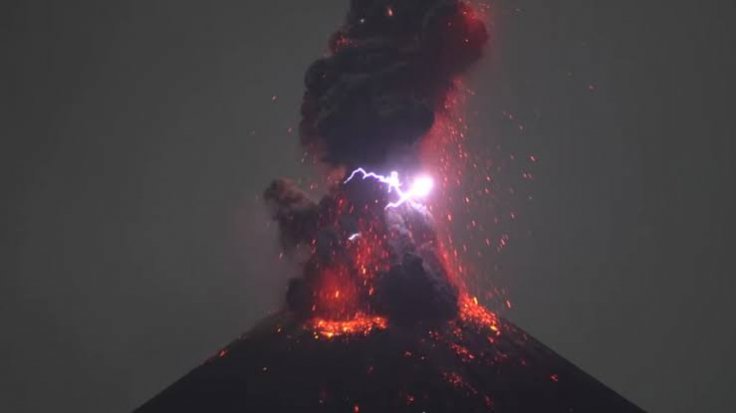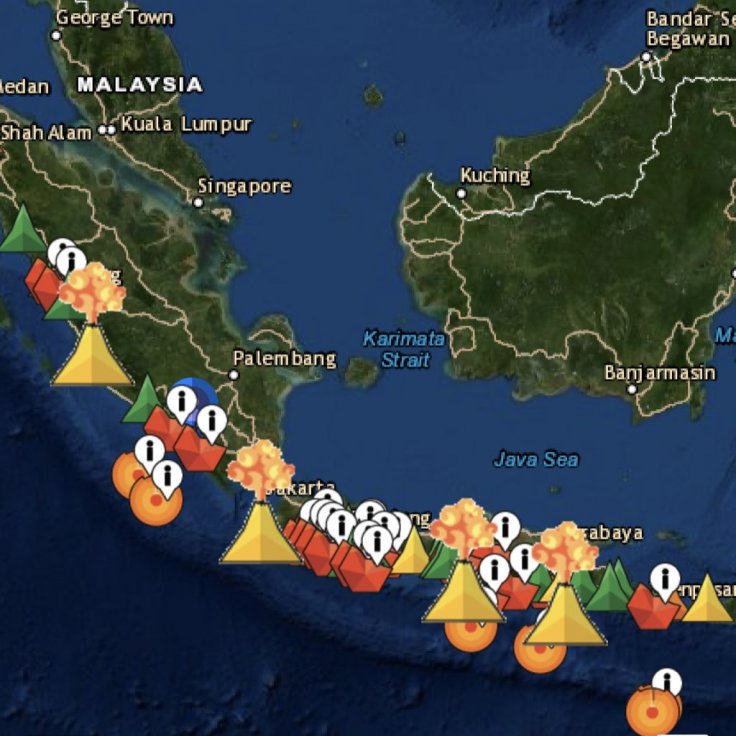Indonesia's volcano Anak Krakatau, known for its deadly 1883 eruption has once again, erupted on Friday, only strong after its 2018 explosion, spewed an ash column spanning nine miles into the sky. People tweeted that 2020 is home to many such natural crises, this came as the coronavirus has engulfed the world.
The volcano erupted at about 11 pm local time, the eruption was heard by people from Jakarta, the capital of Indonesia, which is about 90 miles away. Images and videos from various sources showed volcano erupt with thunder.
This one is believed to be the strongest since the last such eruption in December 2018, that caused a tsunami so bad that it killed more than 400 along the coasts of southeastern Sumatra and western Java, reported Daily Mail The Volcanological Survey of Indonesia known as PVMBG, an Indonesian agency which investigates, records, and warns about volcanoes released a video it recorded:
Breaking news- #Krakatoa #volcano explodes furiously with a 50,000 ft eruption. Shaking homes miles away. The area under a red advisory. Local towns are covered in ash and fog. pic.twitter.com/8rk8DJ17pV
— Disclosure Tv (@DisclosureTv_) April 10, 2020
Heard 100 miles away

The volcano was heard by people far away and they tweeted. One Reddit thread read: "I live in bogor and I can hear the noises as clear as everybody else hear. This feels like a nightmare." That's roughly 100 miles away. That's crazy to imagine something so large and loud that you could hear it from 100 miles away.
Danger?

MAGMA Indonesia, mapping volcanic activity around the island showed the activity in the map and its release said:
"The danger from G. Anak Krakatau at this time is a burst of lava material, lava flow and heavy ash rain around the crater within a radius of 2 km from the active crater, while thinner ash rain can be exposed in more distant areas depending on the direction and speed of the wind."

The release recommended the community, visitors and tourists to not move within a radius of two kilometres from the Krakatau. The tourist areas of Carita Beach, Anyer, Pandeglang and the South Lampung region were still safe from the volcano
The 1883 eruption
In 1883, Krakatau volcano that exploded is known to be 10,000 times more powerful than the atomic bomb dropped on Hiroshima. It killed almost 36,000 people. Studies say that even reduced global temperatures for many years. Official records of the 1883 volcano say it generated a tsunami and destroyed hundreds of surrounding towns and villages.
It also produced the loudest ever sound recorded in modern history and was reportedly heard by more than 10 percent of Earth's surface that sounded similar to a distant gunfire from Australia which is 2,800 miles far.
Volcano #Krakatoa in #Indonesia erupts
Friday 10:35 pm local timeThe ash column reached 13 km high
Located between islands of Java & Sumatra in the Indonesian province of Lampung#vocano #eruption pic.twitter.com/l9BYAzSlSk
— ༻⋆≺ Martin ?️? ≻⋆༺ (@KlatuBaradaNiko) April 11, 2020









